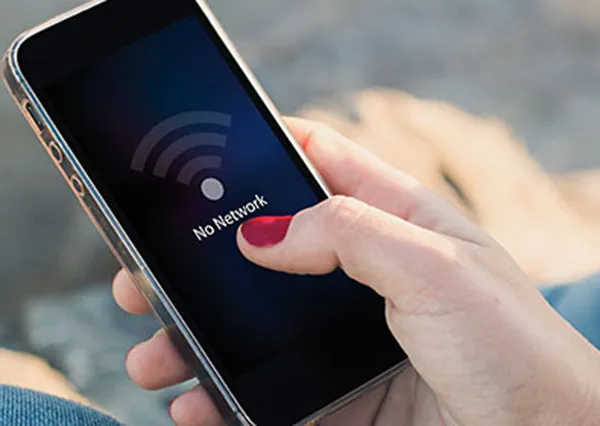The purpose of a signal jammer is to interrupt the communication link (or network) between two (or more) "partners" when they attempt to talk to each other or transmit data between them. Interference with the communication link between drones and their operators is a special situation. We can try to interfere with communication between cellular stations and base stations, between two tactical radios, between bombs and the remote control used to activate them.
In order to mask the signal, the interference source transmits RF power (CW+modulation) at the same frequency as the enemy link or network. The enemy receiver ("listener") will receive both the transmission of the jammer and the transmission of the "partner" simultaneously. If the drone interferes with the power of the "partner", the "receiver" will not be able to correctly "understand" the information/data. Alternatively, if the power of the 'partner' is greater than the power of the disruptor, the 'listener' may be able to correctly 'understand' the message/data, and the communication link between the 'partners' will remain uninterrupted.
Sometimes, the interference signal reaching the input end of the receiver may be lower than the communication ("partner") signal, but it still dominates. This situation occurs because the receiver usually needs some "margin" between the two signals at its input to interpret a signal (usually a stronger signal). However, in advanced communication systems, this "margin" can sometimes even be negative (meaning that the communication signal can be much weaker than the interference signal), while the receiver can still interpret the "companion" signal, making interference more difficult

Usually in anti drone applications, the goal is to interfere with drones to a distance of several hundred meters from sensitive areas/devices (where signal protection covers are installed). For example, we want a drone located 300 meters away from the signal interceptor and flying at an altitude of 10 meters. It should be understood that in this case, the diagonal distance between the signal shield and the drone is roughly the same as the horizontal distance separating them. Therefore, for the sake of simplicity, we will discuss the horizontal distance, and we will not bother when calculating the exact distance because the difference is very small.
Although the equation is the simplest form (no cable loss, SNR, etc.), it can be used to calculate any interference scenario/budget. As you can see, it consists of two dimensions/links (jammer<->drone and operator<->drone), rather than just one dimension/link, such as a communication link. In other words, for each specific condition of the carrier<>drone link (specific output power, antenna gain and height, distance, etc.), the interfering link<>drone has specific conditions/conditions to prevent it That's why answering the question 'What is the range of your drone interceptor?' is not an easy task.is to interrupt the communication link (or network) between two (or more) "partners" when they attempt to talk to each other or transmit data between them. Interference with the communication link between drones and their operators is a special situation. We can try to interfere with communication between cellular stations and base stations, between two tactical radios, between bombs and the remote control used to activate them.
In order to mask the signal, the interference source transmits RF power (CW+modulation) at the same frequency as the enemy link or network. The enemy receiver ("listener") will receive both the transmission of the jammer and the transmission of the "partner" simultaneously. If the drone interferes with the power of the "partner", the "receiver" will not be able to correctly "understand" the information/data. Alternatively, if the power of the 'partner' is greater than the power of the disruptor, the 'listener' may be able to correctly 'understand' the message/data, and the communication link between the 'partners' will remain uninterrupted.
Sometimes, the interference signal reaching the input end of the receiver may be lower than the communication ("partner") signal, but it still dominates. This situation occurs because the receiver usually needs some "margin" between the two signals at its input to interpret a signal (usually a stronger signal). However, in advanced communication systems, this "margin" can sometimes even be negative (meaning that the communication signal can be much weaker than the interference signal), while the receiver can still interpret the "companion" signal, making interference more difficult
Usually in anti drone applications, the goal is to interfere with drones to a distance of several hundred meters from sensitive areas/devices (where signal protection covers are installed). For example, we want a drone located 300 meters away from the signal interceptor and flying at an altitude of 10 meters. It should be understood that in this case, the diagonal distance between the signal shield and the drone is roughly the same as the horizontal distance separating them. Therefore, for the sake of simplicity, we will discuss the horizontal distance, and we will not bother when calculating the exact distance because the difference is very small.
Although the equation is the simplest form (no cable loss, SNR, etc.), it can be used to calculate any interference scenario/budget. As you can see, it consists of two dimensions/links (jammer<->drone and operator<->drone), rather than just one dimension/link, such as a communication link. In other words, for each specific condition of the carrier<>drone link (specific output power, antenna gain and height, distance, etc.), the interfering link<>drone has specific conditions/conditions to prevent it That's why answering the question 'What is the range of your drone interceptor?' is not an easy task.